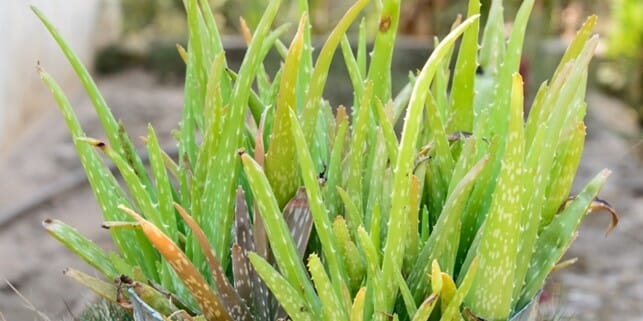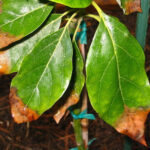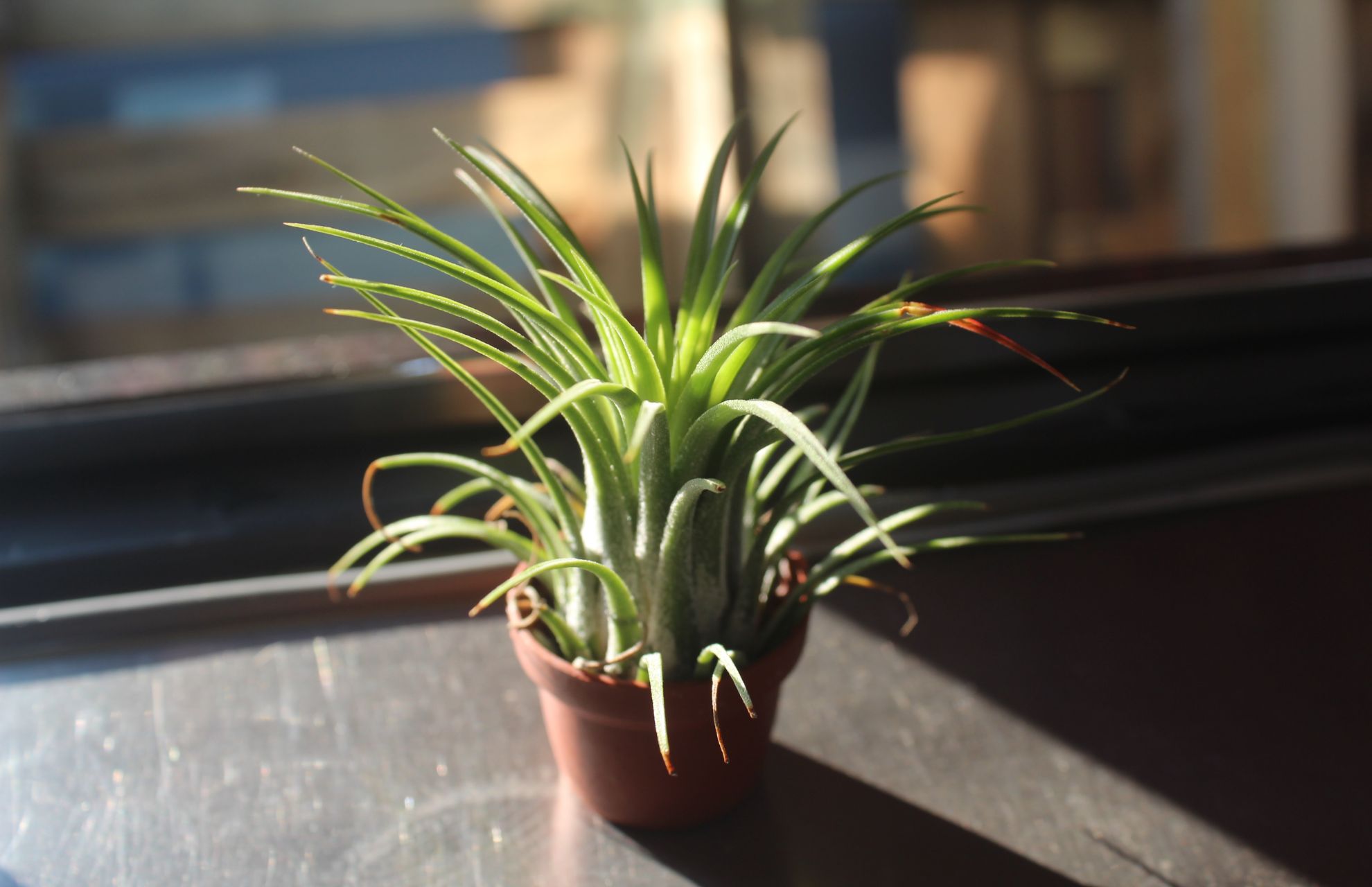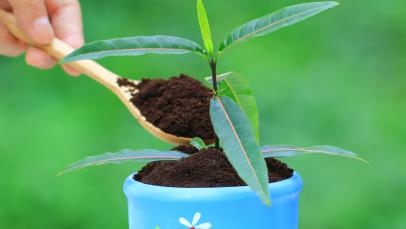Aloe vera plants are one of the simplest and most helpful plants to have around the house. They’re not only easy to care for, but they also have a long list of health advantages, including faster burn healing, wrinkle prevention, and dental plaque reduction—and that’s just the beginning.
However, sometimes, you will see that its leaves turn brown? Why Is your Aloe plant turning brown?
Fortunately, identifying the issue and restoring your plant’s health is not difficult. This article will teach you how to detect the common causes of an aloe vera plant becoming brown, as well as how to cure your plant.
Here are some causes and tips on fixing the Aloe plant turning brown:
1. Overwatering
Overwatering is by far the most prevalent cause of browning Aloe Vera leaves. Given its succulent nature, this indoor plant likes dry soil.
If you find that the leaves have become brown or yellow instead of their original green hue, it’s likely that the plant has been overwatered or that the soil has become too wet.
How to fix:
- Examine the leaves to identify whether the plant needs more or less water.
a. Puckered, dehydrated leaves are less sturdy than healthy ones so they tend to flop downwards and the sides may curl inward toward each other.
b. Lightly squeeze the leaves to feel for bruises. If you notice any soft, cushy spots and brown wrinkled edges, the plant has too much water.
- Check the soil for moisture before you water the plant. Stick your thumb or finger about 3 inches (7.6 cm) down into the soil to feel for moisture. If it’s bone dry, give the plant enough water so that the top 1 inch (2.5 cm) of soil is wet.
- Water your aloe vera plant only once per week.
- If your aloe vera plant is outside, make a note of when it rains so you don’t accidentally overwater it. The key is to let the top 2 inches (5.1 cm) to 3 inches (7.6 cm) of soil dry out before watering the plant.
- Make sure water can flow out of the drainage hole. If you don’t see any water coming out after you water the plant, make sure nothing is blocking the drainage hole.
- Adjust your watering schedule during the winter the summer seasons. For that reason, only water the plant once every 2 weeks in the winter. During mild summers, water the plant once per week.
2. Excess Salt in the Soil
While this isn’t the most prevalent cause of browned Aloe Vera leaves, it’s something to think about. Aloe plants, however, are extremely sensitive to salt as well as a variety of pollutants such as chlorine and fluoride.
Don’t use regular soil, it doesn’t breathe as much and may lead to root rot (and, in turn, more brown leaves).
Lava rock absorbs heat during the day and releases it at night, keeping your aloe vera plant at the perfect temperature on mild, cool nights.
Perlite lightens the soil and prevents too much moisture from hanging around the roots.
Coarse sand allows water to flow down through the soil and out of the pot so there isn’t too much moisture hanging around the root system.
3. Improper Light Exposure
Overexposure to direct sunlight is another typical cause of browned Aloe Vera leaves. While the plant’s rough, desert-like look may lead you to believe it thrives in bright sunlight, too much light can actually burn the leaves.
How to fix:
- Move your indoor potted plant out of direct sunlight, if necessary.
- Shield your outdoor aloe vera plant during the hottest, brightest hours.
- Keep your aloe vera plant in an environment that’s 55°F to 80°F (13°C to 27°C).
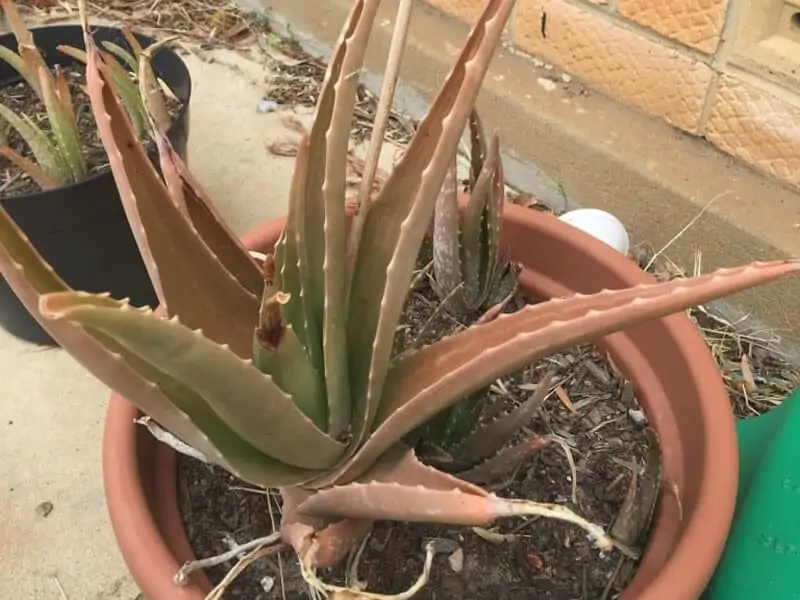
4. Disease
Aloe plants are known for their hardiness and lack of disease susceptibility. However, the aloe plant is susceptible to a variety of diseases that can harm the plant and develop dark blotches on the leaves.
Brown leaf patches on your aloe vera plant might be caused by leaf diseases such as Anthracnose of Aloe Vera, Leaf spot disease in Aloe vera, Leaf spot caused by Cladosporium, The diseases leaf spot and leaf blight
Though each of them is significantly distinct, they nonetheless have a similar threat: decaying leaves or roots. Your succulent leaves may vary in color, with some starting yellow or dark green and gradually turning brown as the illness kills your plant.
How to fix:
- Begin with the correct succulent treatment, which includes temperature and water regulation.
- Avoid shadows and colder spaces, and water only when necessary.
- Snip off the rotting leaves or roots as needed and continue treatment as usual.
5. Pest
While the sticky pulp of this plant may not appeal to most insects, it does appeal to a select few. The most destructive insects include aphids, mealybugs, fungus gnats, flies, and mites, which cause leaf infection and black mildew as a result of eating. These insects might be fatal to your plant if not addressed appropriately.
How to fix:
- separating the healthy leaves from the brown, diseased ones.
- Using a q-tip or a soft cloth, squirt water on the bugs and colonies and remove them.
- may also use rubbing alcohol, but make sure to rinse it off completely with water after you’re done.
6. Drafts Or Cold Air
The leaves of your aloe will begin to droop and turn yellow if it is suffering from cold shock. Brown will eventually travel down the leaves to the plant’s root. The leaves that are nearest to the cold source will be the first to perish. If the cold or cold shock is not addressed, the entire plant will perish.
How to fix:
- Warm-up your aloe plant! You should maintain it in temperatures above 55°F and away from abrupt, chilly blasts of air.
- The leaves of your aloe will begin to droop and turn yellow if it is suffering from cold shock. Brown will eventually travel down the leaves to the plant’s root. The leaves that are nearest to the cold source will be the first to perish. If the cold or cold shock is not addressed, the entire plant will perish.
- If you live in an area where aloe plants may overwinter outside, wrap some straw or other insulation around the base of your plant to protect it from freezing in the winter.
7. Damage
Inadvertent harm to your aloe plant might be caused by curious cats and adventurous youngsters. Brown patches can form as a result of bites, bending, and squeezing leaves. Mild damage to your aloe plant will not hurt it permanently, though it may seem unpleasant. Your plant might be killed by rough handling or significant damage.
Sharp shears can be used to prune away a badly damaged leaf. Aside from that, the damage to the leaf should heal in a few days.
How to fix:
- prune it away with sharp shears. Otherwise, the damage to the leaf should callous over after a few days.
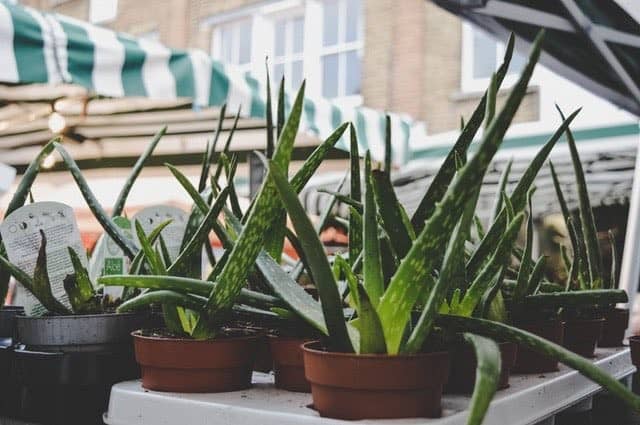
Conclusion
As you can see, there are various reasons why your aloe plant is browning. Check your plant for all of these concerns so you can narrow down the source and make plans to return things back to normal.
Pesticides and fungicides should be used to treat pests and diseases. Check your watering schedule, see if you’re maintaining your aloe at the proper temperature, whether the soil is correct, and if you’ve done anything recently that might have harmed the plant (rough handling, damage by a pet, over-fertilizing, etc.).
Some of these issues can be readily resolved by making the necessary modifications, while others may cause lasting damage to your plants. As a result, identifying problems and making essential changes as soon as feasible is critical.

